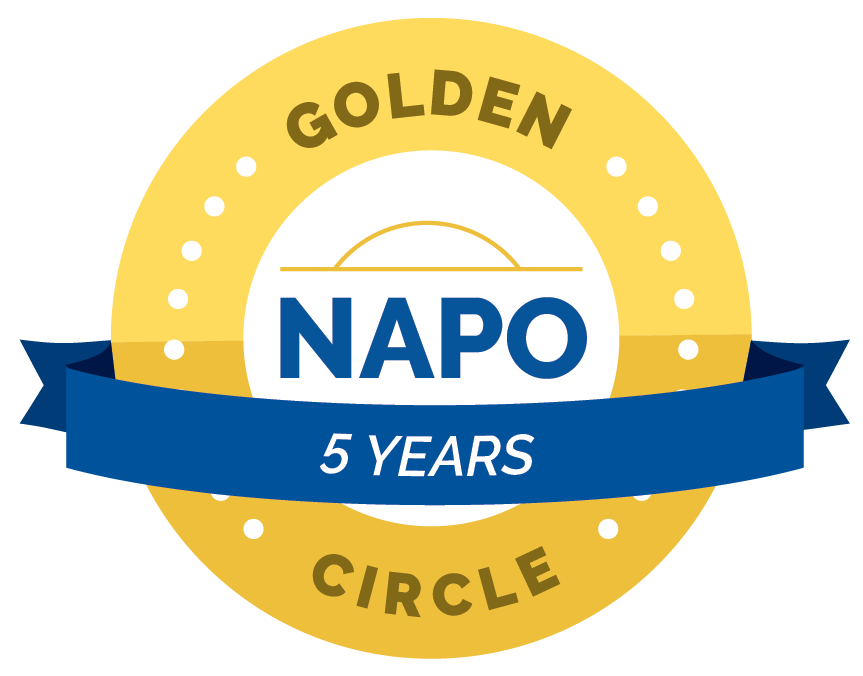Organizing is all about allocating the “prime real estate” within your home and storage spaces. And we all know what real estate is about: location, location, location. This is the idea that the location of a house can drastically increase or decrease the value of a home no matter how nice it is.
Just as the amount of space for homes within the city or within a certain desirable school district is limited, making them more valuable, it’s the same with your stuff and storage spaces. Supply and demand. The demand is high for people to live in these neighborhoods and the supply may be low, and similarly, in certain areas of the home, the demand is high for your belongings to live there, but the supply of space is often limited.
For example, let’s take a look at the kitchen. The kitchen is often central to both the home and daily life. Each day it’s the focal point of activities such as gathering, cooking, eating, working, doing homework, opening mail, etc. Because so much of life in the home takes place in the kitchen on a regular basis, there’s a high demand for lots of items to live there. Organizing then becomes all about allocating the space in the kitchen and assessing the prime real estate within it.
Let’s take a deeper look at the kitchen. Where are the cabinets and drawers located? Is there only one drawer by the stove but two on the other side of the kitchen by the dishwasher? The one located by the stove is prime real estate for your cooking utensils, not your regular silverware you set the table with, or keep your spices in the cabinet by the stove and put your main dishes in the cabinet across the kitchen by your dishwasher for easy unloading.
Furthermore, let’s look at a closet. Many things need to live in a closet (clothes, shoes, coats, bags, accessories, blankets, keepsakes, etc.), and the space within it is often limited, making it very valuable space. For example, if you only have a few feet of hanging rod, that space is most valuable for nicer clothing that shouldn’t be folded. Alternatively, a master bedroom closet that has limited space is prime real estate for the everyday clothing needed for getting ready each day; thus items like formal wear and heavy coats should be relocated to a closet in another room.
In your prime real estate locations, you want the things you use most often stored closest to the place of use. The shelf that’s eye level in your closet should be clothing you access regularly, not the off-season wear. Also, don’t store your archived files in the main filing cabinet or drawer, but rather keep files you access daily or weekly closest to your desk. Store DVDs (if anyone still has these), games and blankets in the family room where they are most likely to be used. Keep everyday cooking items front and center in the pantry and baking supplies or rarely used appliances up high or in the back. Right by the backdoor, you may want to keep your keys, purse, bag, umbrella, coats and dog leashes.
Along the same lines, think of your home in terms of zones. Just as some cities have zoning (areas for homes, areas for sky scrapers, areas for businesses, etc.), create zones for the activities within a home: a zone for cooking and eating, a zone for getting ready, a zone for hanging out, a zone for sleeping. Then within those areas, create more specific zones for baking, food prep, serving and drinking in the kitchen, for hair, teeth, soap and medicine in the bathroom, for games, movies and books in the living room, or for bedding and nightly needs in the bedroom. Some rooms like the laundry room may require a variety of zones like a household management zone, a dog food zone, a tools zone, a backstock zone, a cleaning supply zone, all in addition to a laundry zone.
As you organize your home, remember to think “location location location” as you put something away, or just give us a call and we’ll be happy to help you assess the “prime real estate” of your storage spaces.





